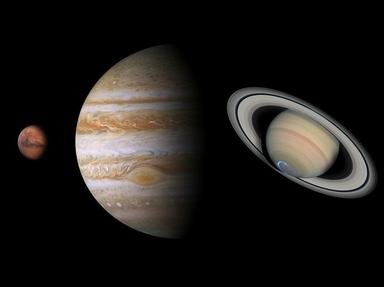Quiz Answer Key and Fun Facts
1. Planet with biggest temperature range
2. Most volcanically-active moon
3. Ice giant planet which spins on its side
4. Terrestrial planet where a day is longer than a year
5. Gas giant planet with strongest magnetic field
6. Saturn moon with surface lakes and seas
7. Ice giant planet with the strongest winds
8. Largest moon of the largest planet
9. Terrestrial planet with tallest volcano
10. Saturn moon with massive water geysers
Source: Author
suomy
This quiz was reviewed by FunTrivia editor
rossian before going online.
Any errors found in FunTrivia content are routinely corrected through our feedback system.

